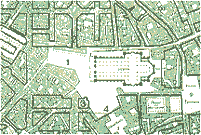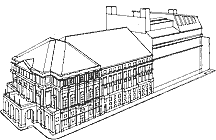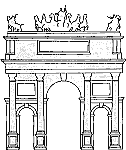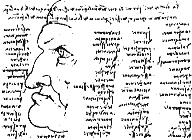|
|
| |
Milan's size and looks have totally changed in the
past two centuries. The old capital of a state of the Holy Roman Empire,
a city surrounded by rice fields, hay fields and meadows and by a few textile
mills, rapidly became first one of Italy's main industrial centers and, more
recently, the capital of Italian finance and of its service sector.
It is Milan's old historical heart that has paid the price for all this economic growth. Florence, Rome, and, of course, Venice seem to have been able to preserve the look and most of the buildings of their respective golden ages. Since Milan's golden age is not yet over, Milan's center looks contemporary. |
|
||||||||
| |

|
[Milano Intl. Airport is MXP]
|
||||||||
| |
[page 48] City center
Seeing the city from above • The three rings
• Piazza Duomo • Teatro alla Scala • Palazzo della Ragione
• Castello Sforzesco • Santa Maria delle Grazie • Last
Supper • Sant'Ambrogio • Colonne di San Lorenzo • Navigli
• Brera district
|
|
||||||||
| |

|
|||||||||
| |
[page 70] Outside the 'Cerchia'
Porta Venezia & Corso Buenos Ayres • Stazione
Centrale, Pirelli
& Centro Direzionale • Porta Garibaldi • Porta Volta &
Monumentale • Sempione • Magenta • From Magenta to Porta Vigentina
• Porta Romana • Porta Vittoria • Monforte
|
|
||||||||
| |

|
|||||||||
| |
[page 83] Museums
Private
art collections • The
City Council's art museums • Brera
• Church
museums • Entertainment
museums • Science
museums • History museums • Library & archives • Other
cultural centers
|
|
||||||||
| |

|
|||||||||
| |
All rights reserved copyright © 1996-2001
Monica Levy, Roberto Peretta copyright © 1996-2001 Ulrico Hoepli SpA, Milano [Want to purchase the guidebook ?] [Instructions on how to do it] |
|
||||||||
| |
||||||
|
|
|
|
|
|
|
|